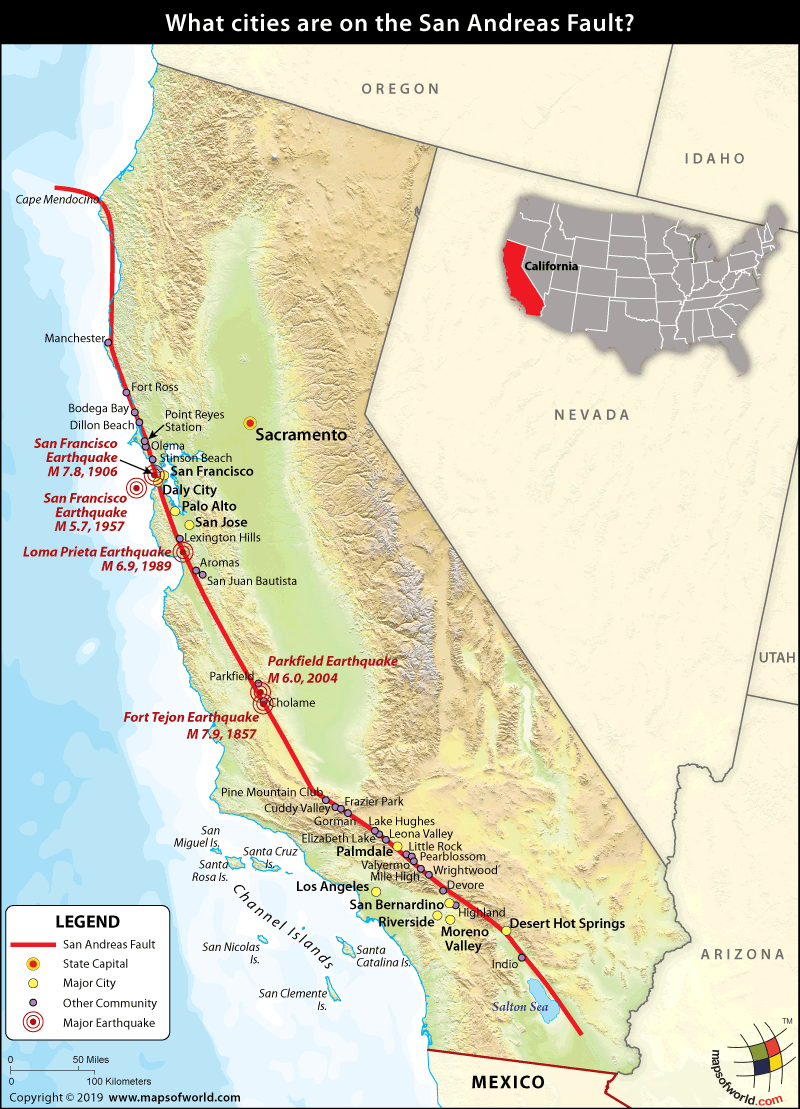

Map Depicting Cities which are on the San Andreas Fault
In geology, a fault refers to a break or fracture in a plate or the rocks that make up the crust of the earth. One of the most essential characteristics to be observed is the movement of the rocks on either side of the fault lines. Such movements release built-up tension, often leading to earthquakes and some seismic activity. The San Andreas Fault Line is one of the biggest fault lines in the world, and it stretches over 750 miles (approximately 1,200 kilometers). It is the fault line that forms the boundary between the North American Tectonic Plate and the Pacific Plate. It starts at the Salton Sea and runs north to the Mendocino coast.
The San Andreas Fault runs through most of California – the most populated state in the US. Over 39.5 million people live in the state, and while San Andreas is not the only fault in the state, it is one of the major fault lines that leave Californians vulnerable to earthquakes.
Related Links:
Related Maps:
The Republic of Madagascar is an island country located in the Indian Ocean, off the…
The Euro is the official currency of the European Union. It is, however, not incumbent…
There are many countries or regions that are partially recognized by the UN, have disputes…
The Alaska Statehood Act was signed into law by President Dwight D. Eisenhower in 1958,…
The name Persia may, however, only be used to refer to Iran in some contexts.…
Hawaii is an Island State in the US. It is one of the 50 states…